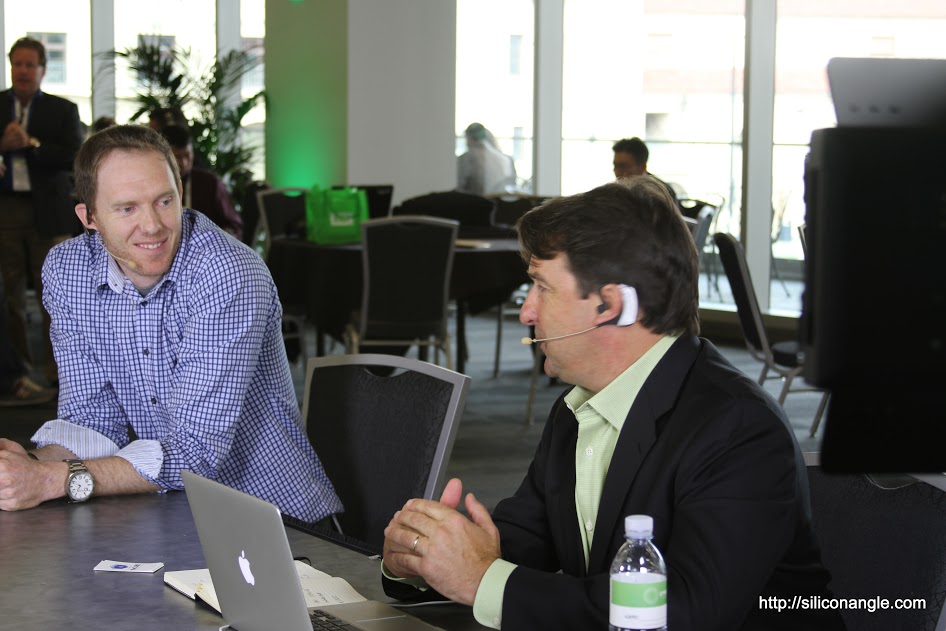 NEWS
NEWS
 NEWS
NEWS
 NEWS
NEWS
![]() From the fifth edition of the Open Compute Project Summit in San Jose, California, theCUBE veterans John Furrier and Dave Vellante interviewed Cole Crawford, Executive Director with the Open Compute Foundation, debating the trends and establishing ways to keep the market free and unrigged.
From the fifth edition of the Open Compute Project Summit in San Jose, California, theCUBE veterans John Furrier and Dave Vellante interviewed Cole Crawford, Executive Director with the Open Compute Foundation, debating the trends and establishing ways to keep the market free and unrigged.
Likening technology to the very core of the American soul, Crawford, formerly the Founder of the Open Source Foundation, stated that “everybody wants to be free, and no one wants to be locked in.”
In his opinion, the fundamentals of Open Source apply both in hardware and software:
Crawford believes there is a phenomenal freedom that exists within the open source ecosystems. On the other hand, Furrier mentioned that there’s a lot of controversy going around at the moment, citing the case of Google buses being pummeled by protesters thrown rocks, and ventured capitalists going off the deep end. One thing is certain though, that “innovation comes from community.”
Talking about the notion of free market, Furrier asked Crawford how a rigged market could be avoided, inviting him to elaborate on the notions of freedom, free markets, and free choices versus the rigged ones. “How do you manage to keep the magic of innovation from being rigged?”
“Reality television is guided and scripted,” said Crawford, “and a lot of open source movements with the best intentions in the world can end up in a place with traditional business model. As the community grows, as the foundation and the movement grow, the price increases, and all of a sudden you have very wealthy companies contributing to these causes.”
“The most important and strategic position you can have in our own ecosystem is a project-lead position, which is a community elected position. To be a relevant, strategic player in this ecosystem, you have to work on technology. As we maintain that pace of innovation, the community is going to be well-served,” promised Crawford.
“Compared to OpenStack, How unique is this?” asked Vellante.
“The way that our Foundation operates is unique. There are five board members, all of them hands-off in terms of technical direction. We run very lean, we rely on the community, following a tier-membership model; the more you give us in terms of participation, time and intellectual property, the less you pay in terms of trademark,” explained Crawford.
Furrier prodded his guest to name the “kind of magic” he hoped “to see at the Open Compute Summit, the kind of magic that disrupts the PC and creates the PC revolution.”
Cole was very intransigent when he stated that “hardware is irrelevant without the workload that runs on it” and he further explained: “if you’re interested in cloud and Big Data, there’s a ton of open source software you can apply to Open Compute; you’ve got an entire program dedicated to making sure OpenStack and Hadoop and these various open source projects run really well on our open source hardware. That’s a defining moment in the enterprise in IT and at-scale IT because, for the first time, you can go and individually select the components of robust open source technology that you want to deploy in your data center to fit the workload that’s important to you.”
From the CrowdChat held ahead of today’s event by SiliconANGLE, one viewer asked Crawford to name the “biggest lesson learned from his previous experiences that could be applied here.” Crawford thinks that “everything is a lesson learned. We love OpenStack and the Open Stack Foundation, as well the Linux Foundation. This is a heterogeneous open source community that couldn’t function in silos,” he said. “We have to be working together.”
“I personally want to be a champion for the consumer of technology,” Crawford confessed. “Big Data by itself is just data. Relevant Big Data is what’s important to us. The type of scale infrastructure we’re going to need, we probably don’t even have today. We’re going to need multi-architecture platforms to run different, specific workloads on. But, as long as you put the consumer first, we’re going to be in a good spot,” said Crawford confidently.
“From a consumer perspective, why is aggregation important?” asked Vellante. To answer, Crawford cited General Patton: “Fixed fortifications are a monument of the stupidity of man.”
“Through this aggregation, you end up with this consistent ecosystem – or datacenter – with bigger bandwidth, faster replications, where virtual consistency will play a major role,” explained Crawford. “You are going to be forced to rack capacity, not rack servers. The days of racking servers are over.”
Furrier agreed, stating that “the future is shipping data centers, not servers.”
Support our mission to keep content open and free by engaging with theCUBE community. Join theCUBE’s Alumni Trust Network, where technology leaders connect, share intelligence and create opportunities.
Founded by tech visionaries John Furrier and Dave Vellante, SiliconANGLE Media has built a dynamic ecosystem of industry-leading digital media brands that reach 15+ million elite tech professionals. Our new proprietary theCUBE AI Video Cloud is breaking ground in audience interaction, leveraging theCUBEai.com neural network to help technology companies make data-driven decisions and stay at the forefront of industry conversations.